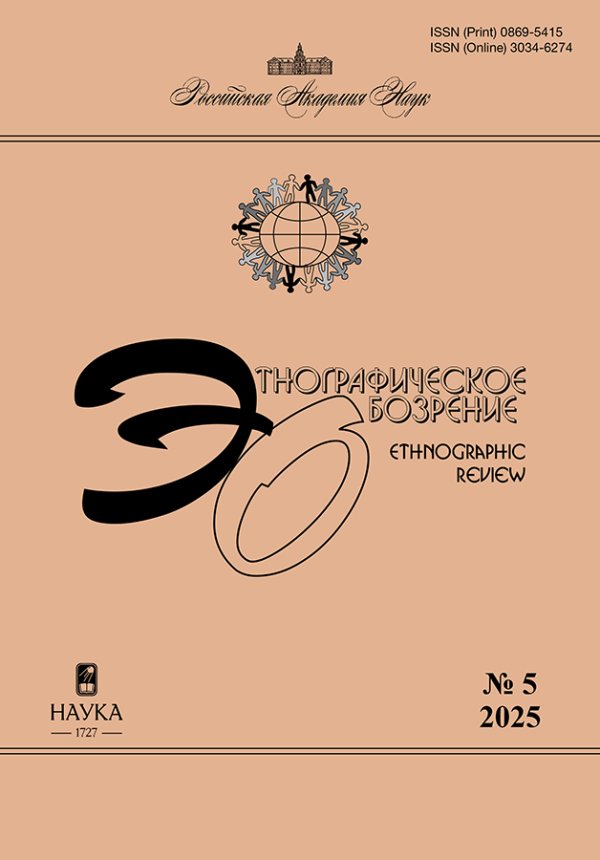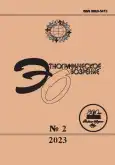Defiling the portraits of state leaders in the soviet culture of the later half of the 1950s - early 1960s
- Authors: Senina I.N1
-
Affiliations:
- European University at St. Petersburg
- Issue: No 2 (2023)
- Pages: 52-65
- Section: Articles
- URL: https://journals.rcsi.science/0869-5415/article/view/144869
- DOI: https://doi.org/10.31857/S0869541523020033
- EDN: https://elibrary.ru/QOVNJM
- ID: 144869
Cite item
Full Text
Abstract
About the authors
I. N Senina
European University at St. Petersburg
Email: jsenina@eu.spb.ru
St. Petersburg, Russia
References
- Антонов Д.И. (отв. ред.) Сила взгляда: глаза в мифологии и иконографии. М.: РГГУ, 2014.
- Архипова А.С., Кирзюк А.А. Опасные советские вещи: городские легенды и страхи в СССР. М.: НЛО, 2019.
- Канторович Э.Х. Два тела короля. Исследование по средневековой политической теологии. М.: Изд-во Института Гайдара, 2015.
- Кинг Д. Пропавшие комиссары. М.: Контакт-Культура, 2012.
- Козлов В.А. Крамола: инакомыслие в СССР при Хрущеве и Брежневе. 1953-1982 годы: по рассекреченным документам Верховного суда и Прокуратуры СССР // Отечественная история. 2003. № 4. С. 93-111.
- Козлов В.А., Мироненко С.В. (ред.) Крамола: инакомыслие в СССР при Хрущеве и Брежневе, 1953-1982 гг.: рассекреченные документы Верховного суда и Прокуратуры СССР. М.: Материк, 2005.
- Латур Б. Нового Времени не было. Эссе по симметричной антропологии. СПб.: Изд-во Европейского ун-та в Санкт-Петербурге, 2006.
- Паперный В.З. Культура два. М.: НЛО, 2016.
- Плампер Я. Алхимия власти. Культ Сталина в изобразительном искусстве. М.: НЛO, 2010.
- Слёзкин Ю. Дом правительства. Сага о русской революции. М.: АСТ; Corpus, 2019.
- Смолкин В. Свято место пусто не бывает: история советского атеизма. М.: НЛО, 2020.
- Barber C. Figure and Likeness: On the Limits of Representation in Byzantine Iconoclasm. Princeton: Princeton University Press, 2002.
- Bernstein A. Caution, Religion! Iconoclasm, Secularism, and Ways of Seeing in Post-Soviet Art Wars // Public Culture. 2014. T. 26. No. 3. P. 419-448.
- Besançon A. et al. The Forbidden Image: An Intellectual History of Iconoclasm. Chicago: University of Chicago Press, 2000.
- Bonnell V.E. Iconography of Power: Soviet Political Posters under Lenin and Stalin. Berkeley: University of California Press, 1998.
- Braarvig J. Iconoclasm -Three Modern Cases // Iconoclasm from Antiquity to Modernity / Eds. M. Prusac, K. Kolrud. Abingdon: Routledge, 2016. P. 153-170.
- Brubaker L., Haldon J. Byzantium in the Iconoclast Era (c. 680-850): A History. Cambridge: Cambridge University Press, 2011.
- Eire C.M.N. War against the Idols: The Reformation of Worship from Erasmus to Calvin. Cambridge: Cambridge University Press, 1989.
- Hobsbawm E., Ranger T. (ed.) The Invention of Tradition. Cambridge: Cambridge University Press, 2012.
- Humphreys M. (ed.) A Companion to Byzantine Iconoclasm. Leiden: Brill, 2021.
- Keane W. Christian Moderns. Berkeley: University of California Press, 2007.
- Kenez P. The Birth of the Propaganda State: Soviet Methods of Mass Mobilization, 1917-1929. Cambridge: Cambridge University Press, 1985.
- Kiilerich B. Defacement and Replacement as Political Strategies in Ancient and Byzantine Ruler Images // Iconoclasm from Antiquity to Modernity / Eds. M. Prusac, K. Kolrud. Abingdon: Routledge, 2016. P. 57-75.
- Koerner J.L. The Reformation of the Image. Chicago: University of Chicago Press, 2004.
- Luehrmann S. Secularism Soviet Style: Teaching Atheism and Religion in a Volga Republic. Bloomington: Indiana University Press, 2011.
- Michalski S. Reformation and the Visual Arts: The Protestant Image Question in Western and Eastern Europe. Abingdon: Routledge, 2013.
- Prusac M., Kolrud K.Introduction - Whose Iconoclasm? // Iconoclasm from Antiquity to Modernity / Eds. M. Prusac, K. Kolrud. Abingdon: Routledge, 2016. P. 1-15.
- Sauer E.W. Disabling Demonic Images: Regional Diversity in Ancient Iconoclasts' Motives and Targets // Iconoclasm from Antiquity to Modernity / Eds. M. Prusac, K. Kolrud. Abingdon: Routledge. 2016. P. 31-56.
- Tumarkin N. Lenin lives!: The Lenin Cult in Soviet Russia. Cambridge: Harvard University Press, 1997.
Supplementary files










